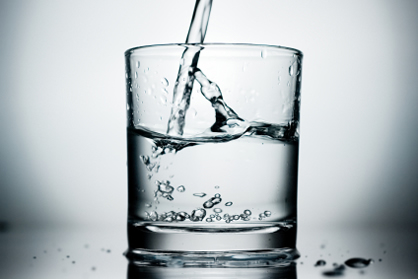How Safe Is Your Drinking Water?
Water. As essential to our lives and our health, we are told to knock back at least eight glasses of this wonderful liquid each day. But what are we gulping down along with our H2O? According to the EPA and Mizar Turdiu, an advocate for cleaner water, a host of contaminants, chemicals and potential toxins are present in tap water.
Pure water from nature truly doesn’t exist. As rain water falls, it accumulates gases, ions, dust and other particles from the atmosphere. As it flows over the earth’s surface, it collects contaminants, including anything humankind dumps into the groundwater and earth. Because we use water for so many functions – drinking, bathing, cooking, cleaning – water is essential not to just our body, but our way of life.
“As our world is contaminated, our water is as well,” Turdiu, owner of Pur2o Water Filtration & Purification Systems, explained. “Water and air are the only things that reach our body’s cellular level; therefore, if the water is contaminated then, it will take these contaminants to the inner of our body, compromising its vital functions.”
Our modern way of life has corrupted our drinking system. Toxins such as arsenic, lead and chlorine (one of a few identified carcinogens) are present in our tap water, coming from insecticides, herbicides, runoff, sewage and human fecal waste, discharge from factories and erosion of natural deposits, to name a few. These impurities can lead to increased risk of cancer, liver problems, kidney damage, high blood pressure, bone disease and a host of other ailments.
The EPA declares that “National Primary Drinking Water Regulations … are legally enforceable standards that apply to public water systems. Primary standards protect public health by limiting the levels of contaminants in drinking water.”
Turdiu, however, has her doubts. She believes in busting the myth that drinking tap water is safe.
The EPA, she points out, employs legal standard limits and not health parameters. “Who's to say EPA standards make water safe to drink or bathe in? The government simply cannot keep up with the number and amounts of pollutants and contaminants in our water supply. The standards set forth by the EPA are ‘legal’ but who's to say they are in anyway relates to how ‘healthy’ they are?” As far as she is concerned, any amount of contaminant could pose a health threat.
Before you run for the nearest brand of bottled water, Turdiu cautions that bottled water often has even less stringent rules and standards, plus the plastic can break down and contaminate the water. Their sources can sometimes be just as contaminated as the municipal water supply, despite coming from rivers and lakes. Several brands, however, do offer filtered and purified water through reverse osmosis.
Many turn to carbon filtration system to remove impurities. Fridge filters and the brand Brita can eliminate chlorine taste and odor. But that is not the end of the story.
“A lot depends on the contaminants present in water. Each supply has different issues,” Turdiu explained.
According to her, there are only two systems that will effectively remove everything that should not be found in water: reverse osmosis and distillation. “If (consumers) are concerned about harsher contaminants: PCBs, lead, fluoride, arsenic, VOCs, pharmaceuticals, etc., then they need to step up to reverse osmosis or distillation,” Turdiu said.
Not only does her PUR2o system remove chemicals, it can make the body more alkaline by elevating its ph.
“Distilled water is, in effect ‘dead’ water, stripped of all minerals,” Turdiu said. “It really should not be consumed as there are no minerals left in the water. The same goes for reverse osmosis. An ideal system - like the PUR2o/RO used by our clients - restores minerals.”
She advocates for a filtration and purification system, through which water is cleaned and remineralized, to be sure your water is safe. Through sediment removal, carbon filtration, reverse osmosis, remineralization and a second round of carbon filtration, such as is supplied by PUR2o’s filtration system, ordinary tap water can be converted to the ideal “healthy” water.
“It is crucial to start with filtered, purified, clean water. PUR2o achieves the optimal result through reverse osmosis – one of the most effect technologies in removing all of the harshest, most harmful contaminants found in drinking water supplies everywhere,” Turdiu said.
The future of water purity looks dim. Water, no doubt, will continue to become contaminated as a result of our daily lives on the planet. Pollutants – or anything else – that go down the drain appear in our water supply, whether soaps, bleaches, acids or medications. Anything dumped in a landfill can seep into the water supply, including battery fluids and chemicals from plastic. And as factory runoff and industrial dumping continues, it is anyone’s guess how impure our future drinking water will be.
“Today, more of us are demanding pure, cleaner and healthier water,” Turdiu concluded. Join the fight and look into where the water in your bottled water comes from, or consider purchasing a water filtration system such as PUR2o. For more information, visit www.pur2o.com.
Tagged in: water, bottled water, filtered water, water contamination, water supply, pur2o, mizar turdiu, tap water,

LadyLUX



